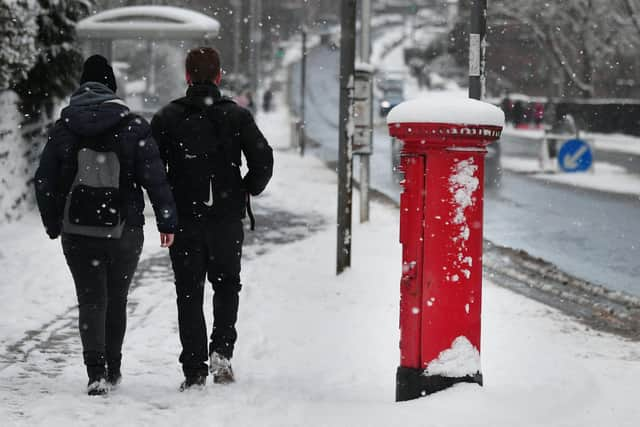Could Derbyshire face a polar vortex this Halloween? Potential winter weather in October
and live on Freeview channel 276
Cold winds blowing from the Atlantic Ocean could potentially cause not only a bout of cold weather in the UK, but also some very early snowfall in the next few weeks.
If this phenomenon occurs, snow could hit the UK as early as October 20th. The last time Britain faced a large degree of nationwide snowfall in October was all the way back in 2008 – a showcase of how rare such an occurrence is.
Advertisement
Hide AdAdvertisement
Hide AdWhile it’s expected to be a countrywide event, rural areas are expected to suffer the most, due to their relative lack of protection from the cold and frost. Furthermore, the southern areas of England are expected to be relatively unaffected in comparison to the north (especially the south west). Scotland, being the region furthest north, is expected to bare the brunt of the cold snap where the UK is concerned.


Derbyshire will not face the worst of this polar vortex-induced snow and cold weather, but is likely to be affected more than regions in the south.
Experts believe that high temperatures in the stratosphere have caused the polar vortex that surrounds the North Pole to become destabilised. When this happens, the polar vortex weakens, causing cold winds (and potentially snow) to drift southwards towards the equator.
A breakdown in the polar vortex is known as a “sudden stratospheric warning”, which is what experts believe may happen again this year and will be the cause of the potential wintery weather.
Advertisement
Hide AdAdvertisement
Hide AdThe notably cold winters of 2009 and 2010 were speculated to have been brought on as a result of a weakened polar vortex. Though scientists have been aware of the polar vortex for many years now, they theorise it may become more and more unstable as the years pass on due to global warming.
Polar vortexes aren’t just exclusive to the Northern Hemisphere, either. The same thing has been known to happen with Antarctica, in the South Pole. In Australia, a polar vortex is referred to as a “polar blast” or “polar plunge”.